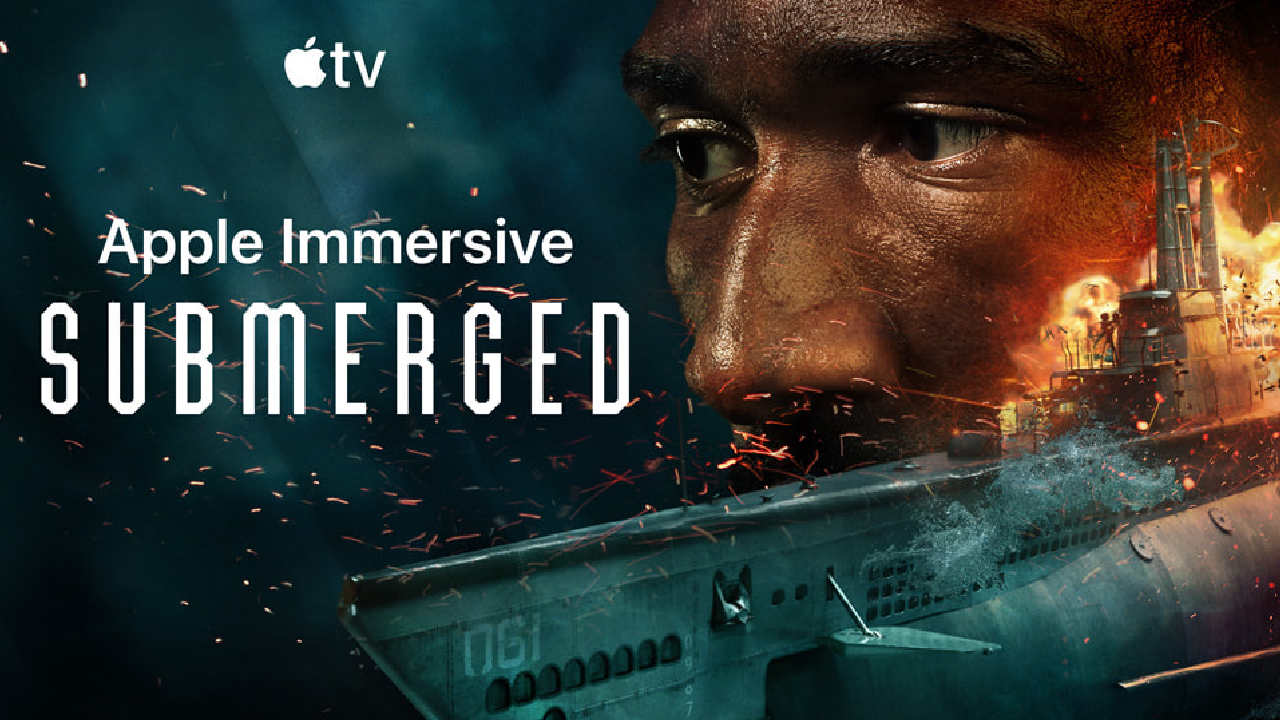A Game-Changer for Content Creation and Viewer Engagement.
Analysis:
Apple’s Vision Pro technology represents a bold leap into immersive content creation that could revolutionize the way we consume and interact with media. With the debut of the film Submerged, entirely captured using Apple’s immersive video capabilities, the company has signaled that augmented reality (AR) is no longer just a novelty—it’s becoming a cornerstone of next-generation storytelling Apple
At its core, Apple Vision Pro allows users to experience films in a highly interactive 3D space. This creates a viewing experience that is less about passive observation and more about dynamic engagement. Unlike traditional 2D screens where viewers are fixed in a static position, Vision Pro opens up new dimensions of interactivity, letting viewers “move” within the visual environment, exploring scenes from different perspectives. This technology isn’t just a visual gimmick—it fundamentally alters the relationship between the content and the audience, immersing users in a world where the lines between physical and digital experiences blur.
Key Impacts on the Tech Industry:
- Redefining Storytelling: With Apple Vision Pro, filmmakers now have the tools to craft narratives that evolve with viewer interaction. For example, a suspense scene in a film could be heightened by allowing the viewer to physically look around corners or inspect objects in the environment, deepening immersion and emotional impact. This shift from linear storytelling to interactive, exploratory narratives could inspire a new genre of media, blending traditional film, gaming, and virtual experiences.
- Creative Freedom and Innovation: Content creators will have far more flexibility to experiment with how stories are told and experienced. Instead of being confined to a flat screen, directors can use depth, perspective, and interactivity to engage audiences in ways previously impossible. This will likely lead to innovations across a range of industries, including advertising, where brands could craft immersive experiences to promote their products, or in education, where students could explore historical events or scientific phenomena in 3D.
- Accelerating AR Adoption: By pushing AR technology into mainstream media consumption, Apple is not only positioning itself as a leader in this space but is also likely to accelerate the adoption of AR by both consumers and competitors. Just as the iPhone helped popularize mobile computing, Vision Pro could normalize immersive, wearable computing experiences, encouraging broader industry investment in AR platforms. Other tech giants, like Google and Meta, will be spurred to expand their AR offerings to remain competitive.
- Expanding Ecosystems for Developers: The introduction of this technology will create new ecosystems for app developers, animators, and content creators who specialize in AR experiences. Apple is well-known for fostering vibrant developer communities, and with Vision Pro, there will be fresh opportunities for developers to create innovative apps that leverage immersive video. The potential for monetization through exclusive content, paid apps, and in-app purchases in this interactive environment is vast.
- Entertainment Industry Transformation: For the entertainment sector, this could mean a significant shift in how studios, streaming platforms, and independent creators approach content production. Theaters and home cinema setups might adapt to better accommodate immersive video experiences, while streaming services could offer premium tiers for immersive content. This will likely lead to new revenue models based on interactive and AR-based content, differentiating streaming platforms and attracting viewers with unique, immersive media options.

Viewer Engagement Evolution:
Apple’s Vision Pro technology is set to transform how viewers engage with media, fundamentally changing the role of the audience from passive spectators to active participants. This shift is powered by immersive video’s ability to draw users into a multi-dimensional environment where they have more control over their experience. Here’s a deeper look at the potential evolution in viewer engagement:
1. From Passive Viewing to Active Exploration
Traditionally, media consumption has been a linear process, where viewers follow a pre-determined storyline from start to finish. With Apple Vision Pro, viewers can interact with their surroundings, choosing how to navigate a scene and even altering their perspective. This level of engagement breaks away from the passive, “sit-back-and-watch” model of media. Imagine a mystery film where instead of waiting for the protagonist to discover clues, the viewer can explore the environment themselves—moving around rooms, interacting with objects, or investigating hidden areas to uncover details. This level of interaction elevates storytelling to a participatory art form, where viewers actively influence how a story unfolds from their perspective.
This interactive freedom introduces a new sense of agency for viewers. No longer confined to the viewpoint that the director dictates, users become part of the narrative, exploring, discovering, and potentially influencing the experience based on their choices. It’s an evolution that mirrors the gaming industry, where players’ actions directly impact outcomes.
2. Emotional Immersion and Deeper Story Connection
Vision Pro’s immersive video will likely enhance emotional engagement by making the viewing experience more personal and impactful. The sense of “being there” can heighten the emotional stakes of a story. For example, imagine standing next to a character as they go through a harrowing experience, or looking around during an intense scene in a horror movie, feeling the tension build around you. By integrating the viewer into the emotional and physical space of a scene, the technology deepens the connection between the audience and the characters, increasing the emotional resonance of the story.
Moreover, this emotional immersion can create more memorable and visceral experiences for viewers. Just as virtual reality (VR) has been shown to elicit stronger emotional reactions than traditional media, Vision Pro could enhance the viewer’s emotional engagement with content, making it more compelling and unforgettable.
3. User-Customized Storytelling and Perspective Shifts
One of the most exciting aspects of Apple’s immersive video technology is the possibility for user-customized storytelling. With the ability to explore different perspectives, each viewer’s experience becomes unique. In a typical film, the director controls how you see the story. With Vision Pro, users might be able to shift viewpoints—following different characters, focusing on different story elements, or even revisiting key moments from a new angle. This level of control allows for more personalized storytelling, where viewers can tailor their experience based on their preferences.
For example, a war movie could offer viewers the chance to witness the same battle from multiple perspectives—on the ground with soldiers or from the vantage point of a commander strategizing. This choice-driven experience creates multiple narrative threads, each designed to cater to individual viewing preferences. This can also extend to “re-watchability,” as viewers may revisit the same content to experience the story from a different angle, keeping content fresh and engaging.
4. Enhanced Viewer Retention and Engagement Metrics
From a business perspective, immersive video experiences have the potential to significantly boost viewer retention. Traditional media consumption often sees viewers disengage or “zone out,” especially during slower sections of a film or series. However, with the ability to explore environments and actively participate in the viewing process, viewers are likely to remain more engaged for longer periods. This increased engagement can translate into better metrics for content providers, such as increased viewing time, more user interaction, and higher satisfaction levels.
Streaming platforms and content creators can leverage this data to better understand how viewers interact with content—whether they spend more time in certain scenes, explore specific environments more thoroughly, or revisit key moments. This information can then be used to fine-tune future content offerings, making them even more engaging and personalized.
5. Cross-Industry Potential and Educational Use Cases
Apple Vision Pro’s immersive video also opens the door for cross-industry applications, where the same principles of viewer engagement can be applied to fields like education, healthcare, and real estate. For instance, in educational environments, students could step into immersive historical reenactments, interacting with key figures and exploring pivotal moments in history in ways that make the learning experience far more engaging than traditional textbooks or lectures. This kind of learning encourages critical thinking and problem-solving as students make decisions that influence their understanding of events.
Similarly, in sectors like healthcare, immersive video could be used for training, allowing medical professionals to engage with simulations of surgeries or complex medical procedures, providing hands-on experience in a controlled environment. The potential for immersion and interaction goes beyond entertainment, reaching into sectors where engagement, personalization, and emotional impact are essential.
6. Social and Collaborative Viewing Experiences
Another exciting development that Vision Pro might bring is social immersion—where multiple users can enter the same immersive environment and interact with each other within that space. This could take social viewing experiences to a new level, where friends and family from different locations can meet in a virtual theater, experiencing the same movie in an interactive setting, and reacting together in real time. By fostering social connection within the immersive experience, Apple is creating opportunities for new kinds of collaborative content consumption that feel more personal and interactive than traditional “watch parties.”
Long-Term Industry Impact:
Apple Vision Pro’s immersive video technology is poised to have far-reaching effects that extend well beyond entertainment, touching nearly every aspect of the tech landscape. Here’s a breakdown of how this innovation will impact various industries over the long term:
1. Redefining the Entertainment and Media Landscape
The most immediate and noticeable impact will be on the entertainment and media sectors. Immersive video will fundamentally shift how content is produced, distributed, and consumed. Streaming services, for example, will likely adopt immersive video as a premium offering, allowing viewers to choose between traditional flat-screen content and immersive, AR-driven experiences. Platforms like Netflix, Disney+, and Amazon Prime may begin to feature exclusive AR content to attract more subscribers and differentiate themselves from competitors.
In addition, immersive storytelling could lead to new genres of films and series, blending elements of gaming with traditional filmmaking. Directors and content creators will experiment with non-linear storytelling, where the audience actively participates in shaping the outcome of a film. This blend of cinema, gaming, and AR could usher in a new “interactive cinema” genre, where viewers engage in a deeper and more personalized narrative experience, akin to how video games tell stories today.
2. Driving Innovation in Hardware Development
As immersive video gains popularity, demand for high-performance hardware will grow. This technology places significant demands on devices in terms of processing power, graphics capabilities, and battery life, particularly for wearable devices like AR glasses and headsets. Vision Pro represents the cutting edge of this hardware, but as the technology becomes more mainstream, we can expect rapid development in related hardware to accommodate immersive content at scale.
Companies like Meta (with its Quest headsets), Google, and Microsoft (HoloLens) are already investing heavily in augmented and virtual reality hardware. Vision Pro’s success could push these companies to accelerate their own R&D efforts, leading to more affordable, lighter, and more powerful AR devices. Additionally, this could drive innovation in ancillary technologies such as high-speed wireless data transmission, cloud computing, and energy-efficient chips designed to handle the graphical demands of AR.
3. Content Creation and New Monetization Models
The rise of immersive video will create new opportunities for content creators, from filmmakers to independent developers. This will open up new revenue streams beyond traditional subscription and ad-based models. For instance, creators could charge premium rates for interactive, AR-enabled content, offering exclusive experiences such as virtual meet-and-greets with characters, interactive behind-the-scenes features, or real-time changes to storylines based on audience input.
Moreover, much like the rise of app stores, Apple Vision Pro will likely encourage the growth of an entire ecosystem of developers and creators specializing in immersive content. New marketplaces may emerge where users can purchase AR experiences, apps, or even custom-built environments tailored to their interests. Platforms such as Unity and Unreal Engine, which are already widely used for gaming and virtual experiences, will see increased demand as creators and developers look to build high-quality immersive environments for Vision Pro.
4. Influencing Other Key Sectors: Education, Healthcare, and Retail
While entertainment is the most obvious industry to benefit from Apple’s immersive video technology, several other sectors will also experience significant disruption.
- Education: Immersive video can revolutionize education by allowing students to experience lessons in a virtual environment, rather than through passive, traditional learning methods. Imagine a history class where students can walk through ancient civilizations, interact with historical figures, or witness key events firsthand. This level of engagement could dramatically improve knowledge retention and make learning more dynamic and personalized.
- Healthcare: In healthcare, immersive video technology could be used for medical training and patient care. Medical students could practice surgeries in fully immersive 3D environments before ever touching a patient. In patient care, AR could assist in diagnosing and treating conditions by offering virtual consultations, interactive rehabilitation exercises, or even real-time visualizations of medical data for enhanced understanding and treatment.
- Retail: The retail industry is already beginning to explore AR with “virtual try-ons” and immersive shopping experiences. Apple Vision Pro could take this a step further by enabling customers to virtually enter a store, interact with products, and make purchases—all from the comfort of their homes. Brands that successfully integrate immersive shopping experiences will likely see higher engagement, greater customer satisfaction, and increased sales conversion rates.
5. Acceleration of the Metaverse and Spatial Computing
Apple Vision Pro also contributes to the broader vision of the metaverse—a virtual world where users can interact with digital environments, objects, and other people in real-time. Although Apple hasn’t explicitly branded Vision Pro as a “metaverse” tool, the technology aligns with the ongoing development of spatial computing, where digital and physical worlds converge. As Vision Pro matures, it could integrate seamlessly with the metaverse, creating shared, persistent virtual spaces where users from around the world can work, play, and socialize.
This concept of spatial computing will influence various sectors, including remote work, where virtual offices and meetings can be conducted in immersive environments, reducing the barriers of distance. The technology could also enhance collaborative design work, allowing professionals in fields such as architecture, engineering, and product design to collaborate in real-time 3D spaces, sharing and manipulating virtual objects as if they were physically present.
6. Increased Competition and Market Consolidation
The success of Vision Pro will likely lead to increased competition among tech companies. Google, Meta, Microsoft, and other players in the AR/VR space will need to respond with innovations of their own. We can expect an arms race in immersive video technology, leading to rapid advancements across the industry. This competition will drive prices down over time, making AR and immersive experiences more accessible to the average consumer.
As the AR and immersive video market grows, it may also lead to market consolidation. Smaller companies specializing in niche AR technologies could become acquisition targets for larger tech firms eager to bolster their immersive video capabilities. This consolidation could streamline innovation and push the industry toward a unified standard for AR content creation, making it easier for developers to create cross-platform experiences.
Conclusion: A Paradigm Shift in Digital Interaction
In conclusion, Apple’s Vision Pro is not merely a technological advancement; it’s a signal of the future of media consumption. By empowering both creators and viewers to engage with content in new, interactive ways, it is poised to reshape entertainment, foster new creative possibilities, and accelerate the integration of AR into everyday experiences. The future of storytelling is here, and it’s immersive.
Apple’s Vision Pro and immersive video technology will profoundly shift how we engage with media, creating new opportunities for personalization, interaction, and emotional connection. Viewers will no longer be passive consumers; instead, they’ll become active participants, exploring content on their own terms and engaging with it in deeper, more meaningful ways. This revolution in viewer engagement will impact not only the entertainment industry but also education, healthcare, gaming, and beyond—ushering in a new era of media experiences that are more dynamic, interactive, and personalized than ever before.
Apple Vision Pro and its immersive video technology mark the beginning of a paradigm shift in how we interact with digital content. Over time, the impact will ripple across the entertainment industry, hardware development, education, healthcare, retail, and beyond. By pushing the boundaries of viewer engagement and content creation, Apple is not just introducing a new way to watch films—it is laying the groundwork for a future where immersive, interactive experiences become an integral part of our digital lives.
As this technology matures, it will reshape not just individual industries but also how we relate to media, work, and the world around us, opening the door to new creative possibilities, business models, and societal shifts.





